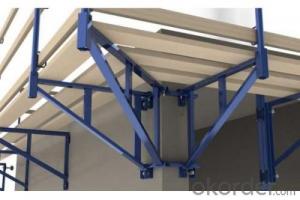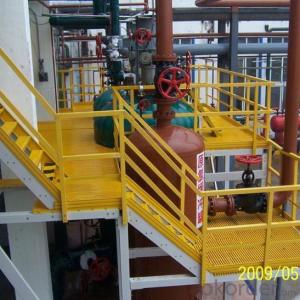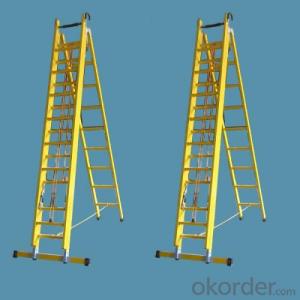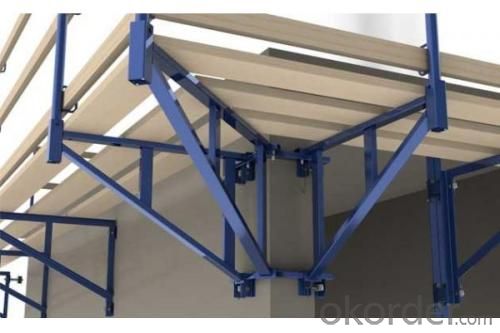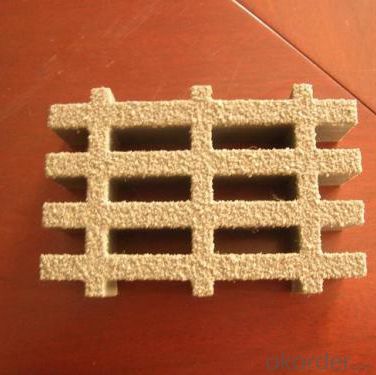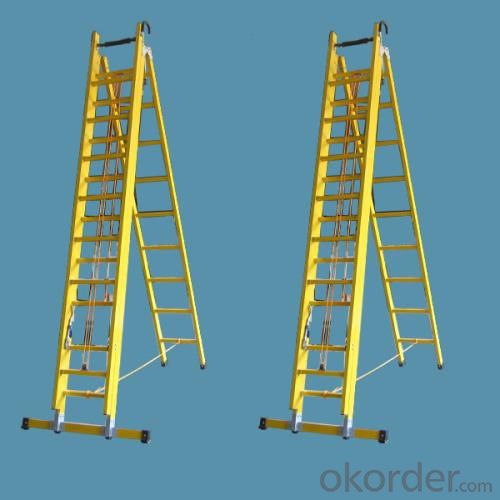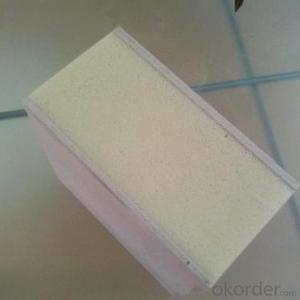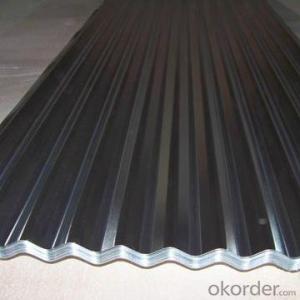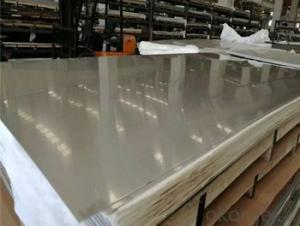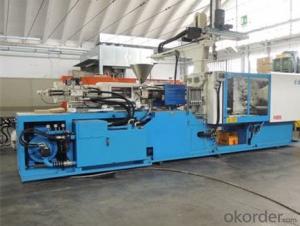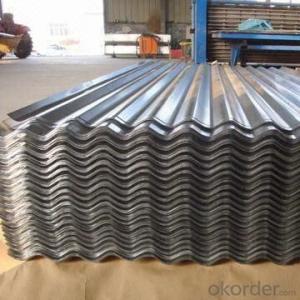FRP Pultrusion Profiles - Pultruded Gratings Anti-Fatigue
- Loading Port:
- Tianjin
- Payment Terms:
- TT OR LC
- Min Order Qty:
- 2000 watt
- Supply Capability:
- 50000 watt/month
OKorder Service Pledge
OKorder Financial Service
You Might Also Like
Specification
PRODUCT DESCRIPTION
Pultruded grating is made by a particular assembly process, which using “I” shape as its main load-bearing and special rod to go through the bearing bar. Pultruded grating include the standard grating and the custom grating, the custom grating can be designed to meet customer’s requirement or special using condition by changing the shape, size and space of the bearing bars, the surface can be covered with lozenge panel, grit panel, or added the anti-slippery sand directly.
FRP pultruded grating has the most characteristics of molded grating, but it has its distinct advantages, it has very high fiberglass content in the loading direction, so it has very high load capability, it has more superiority when used at wide span, so that the basic support will be decreased and the project cost will be reduced accordingly.
SPECIFICATION
The standard space between two crossbars is 6 inch or 12 inch.
Thickness (mm) | Bar width (mm) | Open space (mm) | Open rate (%) | Approx weight (kg/m |
25.4 | 15.2 | 22.8 | 60 | 13.2 |
25.4 | 15.2 | 15.2 | 50 | 15.9 |
25.4 | 15.2 | 10.1 | 40 | 18.5 |
25.4 | 40 | 10.8 | 21 | 14.5 |
38.1 | 15.2 | 22.8 | 60 | 15.8 |
38.1 | 15.2 | 15.2 | 50 | 19.1 |
38.1 | 15.2 | 10.1 | 40 | 22.4 |
50.8 | 25.4 | 25.4 | 50 | 16.6 |
50.8 | 25.4 | 12.7 | 33 | 21.1 |
CHOICE FOR PULTRUDED GRATING
Resin: GP resin, ISO resin, VE resin, Phenol resin
Color choice: Yellow, gray, green, custom color
Surface choice: Groove surface, grit surface, lozenge cover surface
FEATURES
a. Anti-corrosion and anti-rust
b. Light weight and high strength
c. Anti-flammable
d. Anti- fatigue
e. Safe and anti-slippery
f. Anti-ageing
g. Easy of maintenance
FIELDS SERVED
Sewage treatment,
water supply and drainage,
chemical industry,
oil industry,
power engineering,
pulp and paper,
construction engineering,
spinning, marine engineering.
APPLICATION
Operation terrace,
stair walkway,
ground floor,
trench cover,
sidewalk,
foot bridge,
equipment safety fence,
scaffold.
COMPANT DESCRIPTION
CNBM,China National Building Materials Group is a state-owned enterprise in charge of administrative affairs in china building materials industry. Established in 1984, CNBM is a large group corporation of building materials with total assets of 25 billion RMB and a total staff of 30,000.CNBM now owns 200 subordinating firms of solely owned and joint-venture companies.
CNBM International Corporation is one subsidiary of CNBM, we focus on offering good-quality products,professional service and complete solution to our customers. Strong delivery capacity, advanced technology& management, strong financing capability and excellent after-sale service are our advantages in sharing international market.
FAQ
1.Q:Are you factory or trading company ?
A:We are Factory produce FRP machines and FRP products.
2.Q:If can customized by customers requirements?
A:yes,we can produce the machine with customized size.
3.Q:How about the payment?
A:We accept any kind of payment.
4.Q:What is the guarantee?
A:Gurantee is one year.
5.Q:If you can training?
A:yes ,we can training in our factory also can send engineers to your factory training.
PICTURES
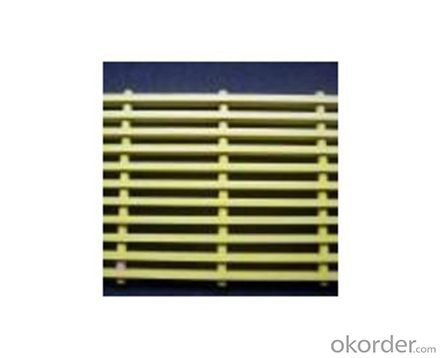
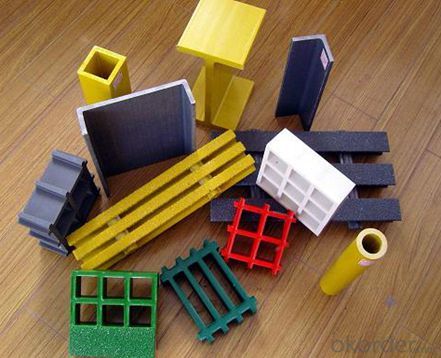
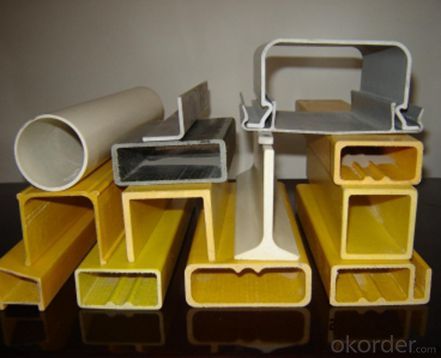
- Q: Can FRP pultrusion profiles be used in the production of electrical cabinets?
- FRP pultrusion profiles are certainly viable for incorporating into the manufacturing process of electrical cabinets. Their exceptional electrical insulating characteristics render them a fitting option for applications involving the creation of electrical cabinets. These profiles are non-conductive, thus granting insulation and safeguarding against electrical currents, ensuring the security of the electrical components encased within the cabinet. Furthermore, FRP pultrusion profiles boast a high strength-to-weight ratio, resistance to corrosion, and durability, making them a dependable choice for enduring electrical cabinets in diverse settings.
- Q: What are the different shapes and sizes of FRP pultrusion profiles available?
- There is a wide selection of FRP pultrusion profiles, which come in various shapes and sizes, to accommodate different applications and industries. Some of the commonly found shapes are as follows: 1. Square and rectangular profiles: These profiles are utilized in construction, infrastructure, and industrial sectors, and they come in different dimensions. They possess exceptional structural strength and can serve as beams, columns, or other load-bearing components. 2. Round profiles: Round FRP pultrusion profiles are frequently employed as structural supports, handrails, and guardrails. They are available in different diameters to suit specific requirements. 3. I-beams: FRP I-beams are well-liked in the construction field because of their high strength-to-weight ratio. They are commonly used as structural members, supporting elements, or floor joists. 4. Channel profiles: Channel-shaped FRP profiles are utilized in applications that demand a combination of strength and versatility. They find use in cable trays, equipment supports, and framing systems. 5. Angle profiles: FRP angle profiles are commonly used as reinforcements or supports in construction and industrial settings. They provide stability and structural integrity to various components. 6. Custom profiles: In addition to the standard shapes mentioned above, FRP pultrusion profiles can be tailor-made to meet specific requirements. Manufacturers have the capability to create profiles with unique shapes and sizes that cater to the needs of different applications. It is worth noting that the availability of shapes and sizes may differ among manufacturers. Therefore, it is advisable to consult suppliers or manufacturers to determine the specific range of FRP pultrusion profiles they offer.
- Q: How do FRP pultrusion profiles perform in high-vibration applications?
- FRP (Fiber Reinforced Polymer) pultrusion profiles perform exceptionally well in high-vibration applications. The inherent properties of FRP materials make them ideal for such situations. Firstly, FRP pultrusion profiles are known for their high strength-to-weight ratio. This means that they are significantly lighter than traditional materials such as steel or aluminum, yet possess great strength and rigidity. This lightweight nature helps to reduce the overall mass of the structure, resulting in a lower vibration amplitude. Secondly, FRP materials have excellent damping characteristics. Damping refers to the ability of a material to dissipate energy and reduce vibration amplitudes. FRP pultrusion profiles have a higher damping coefficient compared to other materials, which means they can absorb and dissipate vibrations more effectively. This helps in minimizing the transmission of vibrations throughout the structure, reducing the potential for resonance and fatigue failure. Additionally, FRP pultrusion profiles exhibit a high resistance to fatigue and corrosion. Vibrations can induce cyclic loading, which can lead to fatigue failure over time. However, the inherent properties of FRP materials, such as their excellent tensile strength and resistance to environmental factors, make them highly resistant to fatigue and corrosion. This ensures the longevity and durability of the profiles even in high-vibration environments. Furthermore, FRP pultrusion profiles offer design flexibility, allowing for customized shapes and sizes that can be tailored to specific applications. This flexibility enables engineers to optimize the profiles' performance in high-vibration scenarios by adjusting the geometry and composition to enhance their dynamic characteristics. In summary, FRP pultrusion profiles are well-suited for high-vibration applications due to their lightweight nature, excellent damping characteristics, resistance to fatigue and corrosion, and design flexibility. These profiles provide a reliable and durable solution that can effectively withstand the challenges posed by vibrations, ensuring a safe and efficient operation in such environments.
- Q: Can FRP pultrusion profiles be used in the construction of water treatment plants?
- Yes, FRP (Fiber Reinforced Polymer) pultrusion profiles can be used in the construction of water treatment plants. FRP pultrusion profiles have several advantages that make them suitable for this application. Firstly, FRP pultrusion profiles are corrosion-resistant. Water treatment plants are exposed to various corrosive elements, such as chemicals and moisture. Traditional materials like steel and concrete can deteriorate over time due to corrosion, leading to maintenance issues and potential structural failures. However, FRP pultrusion profiles are highly resistant to corrosion, ensuring long-term durability and reducing maintenance costs. Secondly, FRP pultrusion profiles are lightweight and have high strength-to-weight ratios. This makes them easy to handle and transport while maintaining structural integrity. Water treatment plants often require structural elements that can withstand heavy loads and support equipment. FRP pultrusion profiles provide the necessary strength without adding excessive weight, making them an ideal choice for such applications. Additionally, FRP pultrusion profiles are non-conductive and have excellent electrical insulation properties. This can be crucial in water treatment plants, where electrical equipment and wiring are present. The non-conductive nature of FRP helps prevent electrical hazards and ensures safe operation. Furthermore, FRP pultrusion profiles can be customized to meet specific design requirements. They can be manufactured in various shapes and sizes, allowing for flexibility in design and construction. This adaptability makes FRP pultrusion profiles suitable for a wide range of applications within water treatment plants, including structural supports, walkways, handrails, and equipment enclosures. In summary, FRP pultrusion profiles are an excellent choice for the construction of water treatment plants due to their corrosion resistance, lightweight yet strong nature, electrical insulation properties, and customization options. They offer long-lasting durability, reduced maintenance costs, and enhanced safety, making them a reliable and efficient solution for this critical infrastructure.
- Q: Can FRP pultrusion profiles be used in chemical storage tanks?
- Yes, FRP (Fiber Reinforced Polymer) pultrusion profiles can be used in chemical storage tanks. FRP pultrusion profiles are known for their excellent corrosion resistance, making them suitable for storing a wide range of chemicals. They are also lightweight, strong, and have a high strength-to-weight ratio, which makes them an ideal choice for constructing durable and long-lasting chemical storage tanks. Additionally, FRP pultrusion profiles can be customized to meet specific design requirements, allowing for flexibility in tank design and construction. Overall, FRP pultrusion profiles are a reliable and cost-effective option for chemical storage tanks due to their corrosion resistance, strength, and customization capabilities.
- Q: Can FRP pultrusion profiles be used in agricultural applications?
- Indeed, FRP pultrusion profiles are applicable in the field of agriculture. Renowned for their remarkable strength-to-weight ratio, resistance to corrosion, and durability, FRP pultrusion profiles are an ideal choice for a variety of agricultural uses. One common utilization of FRP pultrusion profiles in agriculture is the construction of livestock enclosures, encompassing fences, gates, and pens. These profiles possess outstanding resistance to weather conditions, chemicals, and degradation caused by UV rays, ensuring their long-lasting performance in outdoor environments. Furthermore, their lightweight composition facilitates ease of handling and installation. Moreover, FRP pultrusion profiles find application in the production of agricultural equipment and machinery. They can be employed for structural components, such as beams and supports, as well as functional parts like handles, brackets, and covers. The impressive strength of FRP profiles enables them to withstand heavy loads and challenging operating conditions, while their resistance to corrosion guarantees their longevity in corrosive surroundings such as fertilizer storage areas or livestock waste management systems. Additionally, FRP pultrusion profiles can be utilized for irrigation systems in agriculture. Their non-conductive nature renders them perfect for situations requiring electrical insulation, such as the creation of irrigation pipes or channels. Furthermore, the corrosion resistance of FRP profiles ensures their ability to endure exposure to water, chemicals, and fertilizers frequently employed in agricultural irrigation. To summarize, FRP pultrusion profiles exhibit exceptional suitability for agricultural applications due to their high strength, resistance to corrosion, and durability. Whether employed in livestock enclosures, agricultural machinery, or irrigation systems, FRP profiles offer numerous advantages that position them as a reliable choice within the agricultural industry.
- Q: What are the maintenance requirements for FRP pultrusion profiles?
- The maintenance requirements for FRP (Fiber Reinforced Polymer) pultrusion profiles are generally quite low. FRP pultrusion profiles are known for their durability and resistance to corrosion, making them a low-maintenance option for various applications. However, there are a few key maintenance practices that can help prolong the lifespan and ensure optimal performance of FRP pultrusion profiles. 1. Regular Cleaning: Periodic cleaning is important to remove any dirt, dust, or debris that may accumulate on the surface of the profiles. This can be done using a mild detergent solution and a soft brush or cloth. Avoid using abrasive cleaners or materials that may scratch the surface. 2. Inspection: Regular visual inspections should be carried out to identify any signs of damage or wear. Inspect the profiles for cracks, chips, delamination, or any other visible defects. If any issues are detected, they should be addressed promptly to prevent further damage. 3. UV Protection: FRP pultrusion profiles are generally resistant to UV radiation, but prolonged exposure to direct sunlight can eventually cause some degree of degradation. Applying a UV protective coating or using a UV-resistant paint can help minimize the effects of UV exposure and extend the lifespan of the profiles. 4. Lubrication: If the pultrusion profiles have moving parts or connections, such as hinges or joints, applying a suitable lubricant can help ensure smooth operation and prevent friction-related issues. It is important to use lubricants that are compatible with FRP materials to avoid any adverse chemical reactions. 5. Repair and Replacement: In case of any significant damage or wear, it may be necessary to repair or replace the affected sections of the FRP pultrusion profiles. This should be done by trained professionals who have experience working with FRP materials to ensure proper repair techniques and maintain structural integrity. Overall, while FRP pultrusion profiles require minimal maintenance, regular cleaning, inspection, and addressing any issues promptly are key to ensuring their longevity and optimal performance. Following these maintenance practices can help maximize the lifespan of FRP pultrusion profiles and maintain their structural integrity over time.
- Q: Can FRP pultrusion profiles be used in electrical insulation applications?
- FRP pultrusion profiles are capable of being utilized in electrical insulation applications. They possess exceptional electrical insulation properties, rendering them appropriate for a broad range of electrical applications. The superior dielectric strength of FRP materials ensures the efficient containment of electrical currents within designated pathways, thus preventing leakage and electrical hazards. Moreover, FRP profiles exhibit low electrical conductivity, thereby decreasing the likelihood of electrical shorts and enhancing overall safety in electrical insulation applications. The non-magnetic characteristics of FRP materials are also advantageous as they eliminate the potential for electromagnetic interference (EMI) in sensitive electrical systems. Furthermore, FRP pultrusion profiles are lightweight, resistant to corrosion, and boast a lengthy operational lifespan. This renders them an economical and robust solution for electrical insulation applications.
- Q: Are FRP pultrusion profiles resistant to nitric acid?
- FRP pultrusion profiles exhibit a general resistance to nitric acid. Nitric acid, being a potent oxidizing agent, has the ability to corrode various materials, including metals. However, the construction of FRP pultrusion profiles involves the use of composite materials that are specifically engineered to withstand the effects of corrosive substances, including nitric acid. The resilience of FRP pultrusion profiles against corrosion is attributed to the combination of reinforcing fibers, such as fiberglass or carbon fiber, and a resin matrix that securely binds these fibers together. The resin matrix, typically a thermosetting polymer like polyester or epoxy, forms a protective barrier that shields the profiles from corrosive substances. Nitric acid is renowned for its capacity to corrode and deteriorate metals. Nonetheless, FRP pultrusion profiles exhibit exceptional resistance to nitric acid due to the inert nature of the composite materials employed. The reinforcing fibers utilized in FRP profiles do not react with nitric acid, while the resin matrix effectively prevents the acid from reaching and corroding the fibers by acting as a barrier. It is essential to acknowledge that the specific resistance of FRP pultrusion profiles to nitric acid may vary depending on the precise composition of the composite materials utilized, as well as the concentration and temperature of the nitric acid. Therefore, it is always advisable to consult the manufacturer or supplier of FRP profiles to ensure their compatibility with nitric acid in specific applications.
- Q: Can FRP pultrusion profiles be used in the construction of oil storage tanks?
- Yes, FRP (Fiber Reinforced Polymer) pultrusion profiles can be used in the construction of oil storage tanks. These profiles provide excellent corrosion resistance, high strength-to-weight ratio, and durability, making them suitable for storing various chemicals, including oil. Additionally, FRP pultrusion profiles are easily customizable, allowing for the construction of tanks of different sizes and shapes to meet specific requirements.
Send your message to us
FRP Pultrusion Profiles - Pultruded Gratings Anti-Fatigue
- Loading Port:
- Tianjin
- Payment Terms:
- TT OR LC
- Min Order Qty:
- 2000 watt
- Supply Capability:
- 50000 watt/month
OKorder Service Pledge
OKorder Financial Service
Similar products
Hot products
Hot Searches
Related keywords
